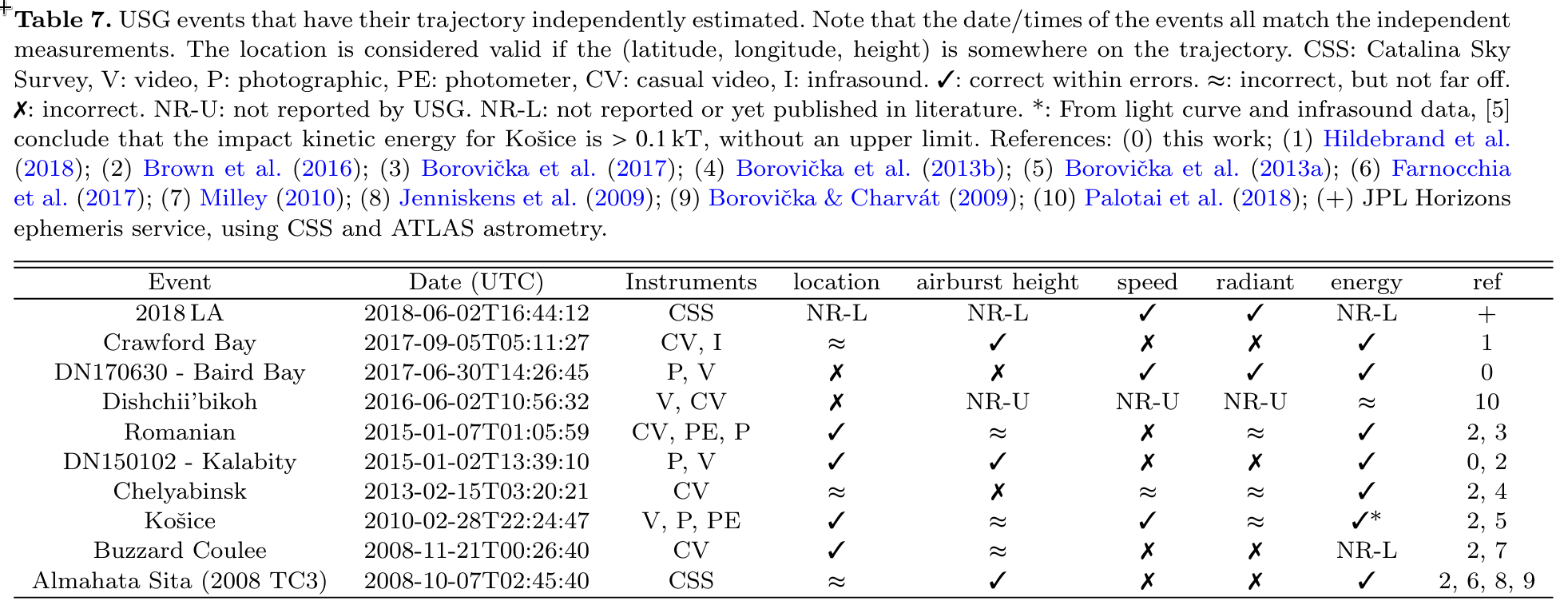Some questions and answers on the 6th May daytime fireball over the Riverland region of South Australia.
Around 3:15pm local time on the 6th May 2021, many locals around the Riverland region of South Australia reported seeing a large fireball burning through the atmosphere. Some also reported hearing two big sonic booms too. We knew at once it had to be something rather large to be seen in the daytime and outshine the sun. There were surprisingly no reports on the IMO website, and without lots of witness reports, we can’t figure out where exactly it was, let aloone how big. Unfortunately the DFN cameras only record durting the night so we rely on witness reports for daytime events. We waited to see if it was large enough to trigger the US gouvernment satellite sensors – it was! It’s on the small side when looking at the global map on the CNEOS) website, but a ~0.1kt TNT energy signature is still impressive. The CNEOS site also reports a velocity and direction estimate. This surprisingly gave speeds that meant this rock would have come from interstellar space – outside our solar system! This generated quite a bit of interest in searching the large possible fall area for fragments (from Loxton to Peebinga). Unfortunately this is probably unlikely, and we answer some questions about this below.
Q: So, the origin of this rock is from outside of our solar system?
A: The orbit some people have reported shows it comes from interplanetary space. These orbit calculations are correct using the data we have from CNEOS (we reach the same conclusions). There are however known issues with the CNEOS data when used for calculating orbits. In 2015 and 2017, 2 fireballs detected by CNEOS were also detected by the Desert Fireball Network, making a comparative study possible. The peer-reviewed research published here shows that there are some issues with the CNEOS bolide data. Check out the table from this work at the bottom of the post.
Q: So, the origin of this rock is from inside our solar system?
A: We can’t know that for sure either. As Aussie scientists we would absolutely love to think that we could have a rock sample from outside of our solar system waiting for us in our backyard, but it is unlikely to be the case, as we have no other data at this stage. The CNEOS data used to calculate the orbit is known to be innacurate in some cases. Note if the velocity is 25% less than reported, it would have not only come from inside our solar system, but the very standard orbit pointing to an asteroid belt origin, where all meteorites with known orbits come from.
Q: How big was it?
A: The CNEOS data is not very good for orbit calculations, but it is usually accurate for estimating how big of a bang bolides make. In this case the reported energy data shows that the bolide generated a kinetic energy equivalent to the explosion of 76 tons of TNT! This corresponds to an object just under a ton, similar to a small car. However its size before impact would have been much smaller than a car in size because of the high rock density: just under 1 metre across in diameter.
Q: Are there meteorites on the ground?
A: Again we don’t know for sure, but contrary to the interstellar nature the orbit, there are several signs in favour of a meteorite landing. The height of peak brightness of the bolide (31 km), and the very large size make material survival very likely. The sonic boom heard by some people is also a good indication, especially for lots of small fragments.
Q: Would it have made a crater on the ground?
A: No. A crater involves excavating bedrock and that can’t happen with such small objects. Check out the other effects a cratering event would have on Imperial College’s Earth Impacts Effects Program. It might have made a ‘splat’ though. Small pieces will generally bounce and roll on hard ground, but if the ground was wet or muddy, it could have made a small splash zone.
Q: Do you know where these meteorites have landed?
A: Likely somewhere between Loxton and Peebinga. Fragments from an exploding meteoroid will generally get carried by the wind too so could have made it a fair way across into Victoria. Be on the lookout for unusual, black rocks that make a compass needle move. That’s a large area though, and the DFN usually tries to narrow its search regions to below a 2 km2 region before we go searching.
Q: I think I found a piece, it was somewhere near the SA-Victoria border, what do I do?
A: First have a quick look through the video made by GFO partners from the university of Alberta on confirming what you found.
Still likely a possible meteorite? Take some good pictures, and try not to pick it up with your fingers. Wrap it in aluminium foil if you can, then check with a local expert!
- If you found it in Victoria, get in touch with Andrew Tomkins.
- If you found it in South Australia, get in touch with one of us. Note that meteorites found in SA belong to the SA museum.
Table from Devillepoix et al. 2019, with CNEOS events observed by the DFN, and some other independantly observed bolides
The table below is from this publication and shows how errors in either “speed” or “radiant” (which is a fancy word for direction) gives wrong orbits for some fireball events listed. See for yourself on average how often an orbit calculated from these CNEOS data is wrong:


